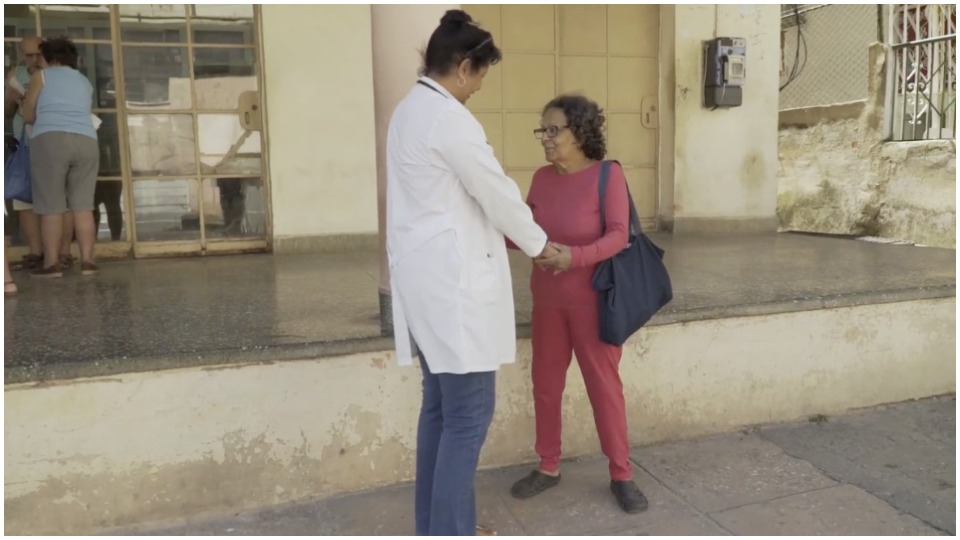
HAVANA—For the past three weeks, I have been working mornings in my local doctor’s office. My volunteer job is to go through the six drawers of around 1,500 patients attended by my doctor, Marta Gálvez. The neighborhood is in Nuevo Vedado, near the Plaza of the Revolution, and stretches from La Rosa to Ermita to Tulipán to Boyeros and back around Boyeros to La Rosa, which is where Marta’s office is.
The office is on the first floor, and her apartment is on the second, a system developed by the Cuban government and public health system in the mid-1980s to locate a doctor in every neighborhood who, in turn, is attached to a neighborhood comprehensive multi-service community health center (polyclinic), which itself serves around 30 neighborhood doctors and their patients.
Each patient has a file, and each file needs to be crosschecked with a book for that block in which are enumerated by the local block committee the inhabitants of each apartment or house and who has left and who has moved in. As Marta has not had the assistant who usually keeps up the files, my job is to do this crosschecking and make sure that all the files are in order by street and that every person is accounted for.

Today, as I was sorting through the papers that make up each file, I realized that in the 21st century, one of the most comprehensive public health systems in the world not only functions with handwritten notes, referrals, and accounts but functions thoroughly and well. Not only does it function with handwritten files, but while in the United States people must make a conscious effort to recycle paper, here recycled paper is pretty much all we have.
We don’t have sticky notes; we cut sheets of paper in squares. We don’t have multi-colored files; we have magic markers, files that have seen better days, and repurposed notebooks. When a file is missing, likely because the patient has taken it with them to a consultation at the polyclinic or hospital, we put in a piece of recycled paper to mark the spot with name and address; the patient will bring it back when they return to report to Marta.
And the system functions. Marta knows every one of her patients because if they don’t come to her, she goes to them. When I can’t find a file that corresponds with a specific entry in the record book, Marta always knows if the patient has the file with them, has moved away, or died. If the neighborhood committee has made a notation in the book for this, then I pull the file.
If there’s any question, Marta knows the answer. If she doesn’t, she’ll go in the evening to knock on the apartment door and find out. Yes, Marta, who has been a doctor for 30 years, is brilliant, kind, attentive, and caring. But she’s not in this regard exceptional: The family doctor is the bedrock system as an integral and integrated part of a well-knit community.
VIDEO: Martica, A Family Doctor
This is the system that has been mobilized to fight COVID-19 in Cuba. It has been carefully built and revised since the 1960s, with the family doctor system emerging in the 1980s. It has successfully battled hemorrhaging dengue and prevented a widespread outbreak of Zika virus, chikungunya virus, and influenza virus subtype H1N1. For this epidemic, there is an additional level of teams of medical students who go door to door, reporting back then to the family doctor they are working with.
With this system, Cuba has been able to track the contacts of every one of the 457 people that has contracted COVID-19 and every contact of those contacts—all are in quarantine. Where there are communities with as few (or as many) as eight cases of COVID-19, the entire community is isolated with the care and attention of the entire medical system, the civil defense, the food supply system, and the local government.
No, the system is not foolproof. I have encountered doctors not up to the task, young ones who seem totally green and older ones who are indifferent. As everywhere, there are definitely bad doctors; there are definitely mistakes. But there are so many layers and safety nets that, when the entire system is mobilized as it has been in the planning stages since January and in execution since March 11, date of the first cases of COVID-19, it is hard to imagine that anyone can fall through the cracks.
In the midst of a worldwide outbreak of a terrifying disease, as I read of the horrors happening in the most advanced countries, countries with seemingly endless wealth and computers at every level, what is happening here is very, very reassuring. As are the multiple information sessions throughout the day on television and radio letting everyone know exactly what is happening and what the plans are. Even as cases here are increasing and additional communities go into full quarantine, it is still clear that there is a plan, and more plans to be rolled out.
All this occurred to me today as I was piecing together a particularly falling-apart file. I wasn’t finding it frustrating that I didn’t have the supplies I needed to do the kind of job I’d do at home, everything color-coded and ready to be digitized. I had no feeling of hopelessness or helplessness. I really, truly knew that I was an important cog in a functioning wheel.
Nope, there are no computers at the ordinary everyday level. The doctor does not wheel a little stand in with a laptop to take notes when they see you. There is no connection from that little stand and computer to the polyclinic.
If Marta sends you to the polyclinic, as she did with me recently, referring me to the ophthalmologist there, she sent me with the referral on a recycled piece of paper and my complete file. The receptionist at the polyclinic wrote my appointment on that same scrap of paper. The ophthalmologist, not having the equipment she needed to do the exam she wanted, called over to the ophthalmology department of the hospital and wrote her referral to that specialist on another piece of paper to take with me, along with the file, to the hospital. When all is done, I will take the file back to Marta so she can review the results.

I emphasize again: The totality of this health system works like interlocking spokes of wheels within wheels as it reaches in concentric circles up to the top centers of epidemiology, attention to the ill, research, mathematics, computer modeling, planning, and then back again to the first and primary level. And yes, at the levels where it is really needed, there are all the sophisticated equipment and computers you can imagine.
All of the systems and equipment of any modern medical system are in use in Cuba. Epidemiological institutions like the Pedro Khoury Institute are renowned worldwide. Cuba’s pharmaceutical system, born of necessity to take care of the country in the face of the U.S. blockade, combined with a centuries-old scientific bent, is also world-known.
This is not a low-level or fly-by medical system. Cuba does the most sophisticated procedures that are done in any first-world country. The point is that Cuba also knows how to maintain its scarce resources, also knows the scarcity of a combination of a poor economy and the ferocious blockade that encircles this island, and will let nothing stop it from ensuring the health of its population.
Could the situation get out of hand as it has in so many other countries? I imagine so, and at moments I worry that it might. Does the growing number of cases and numbers of people in quarantine mean that it is? Will there be cases in my neighborhood?
This report was edited by Walter Lippmann and reposted from CubaNews.









